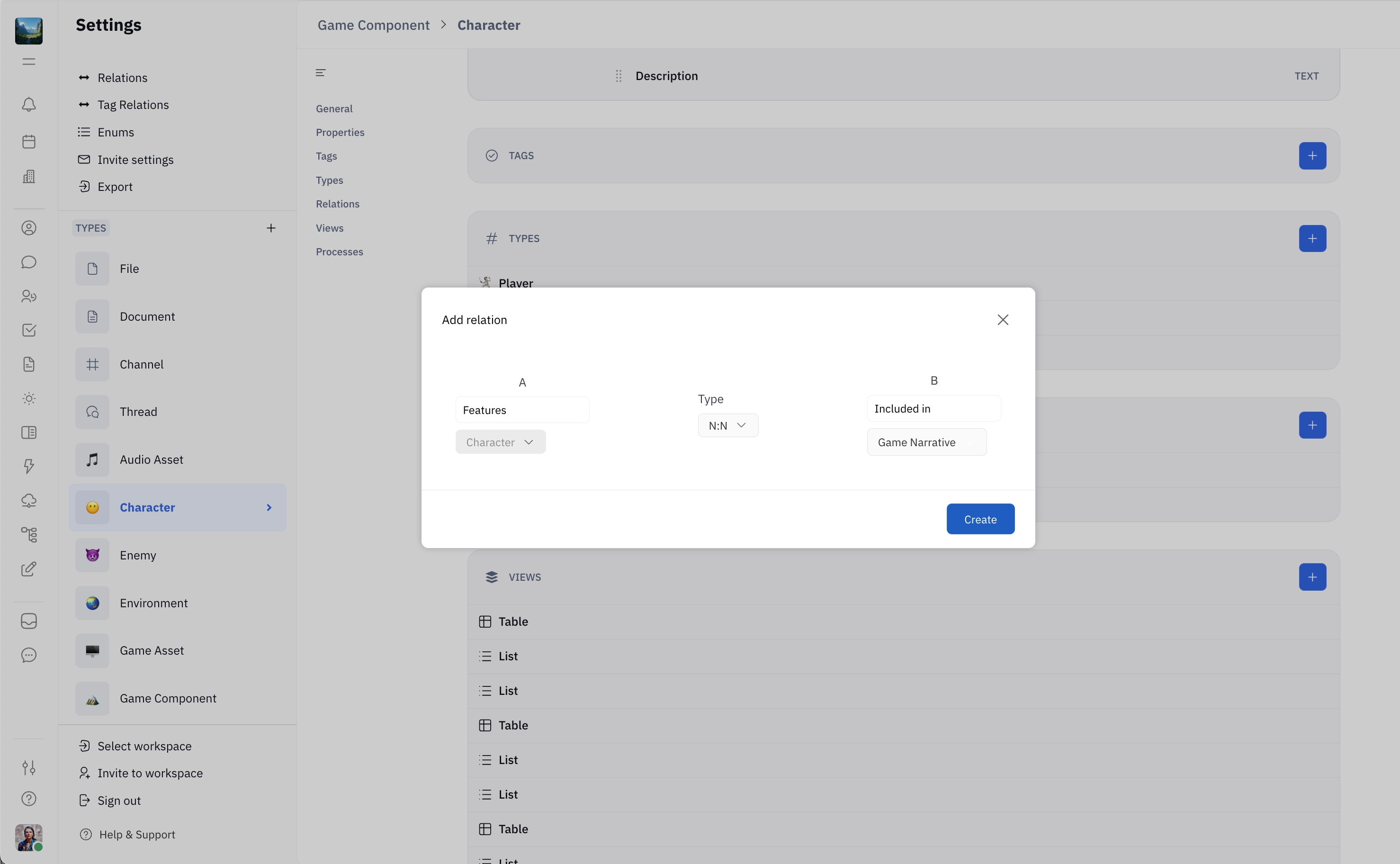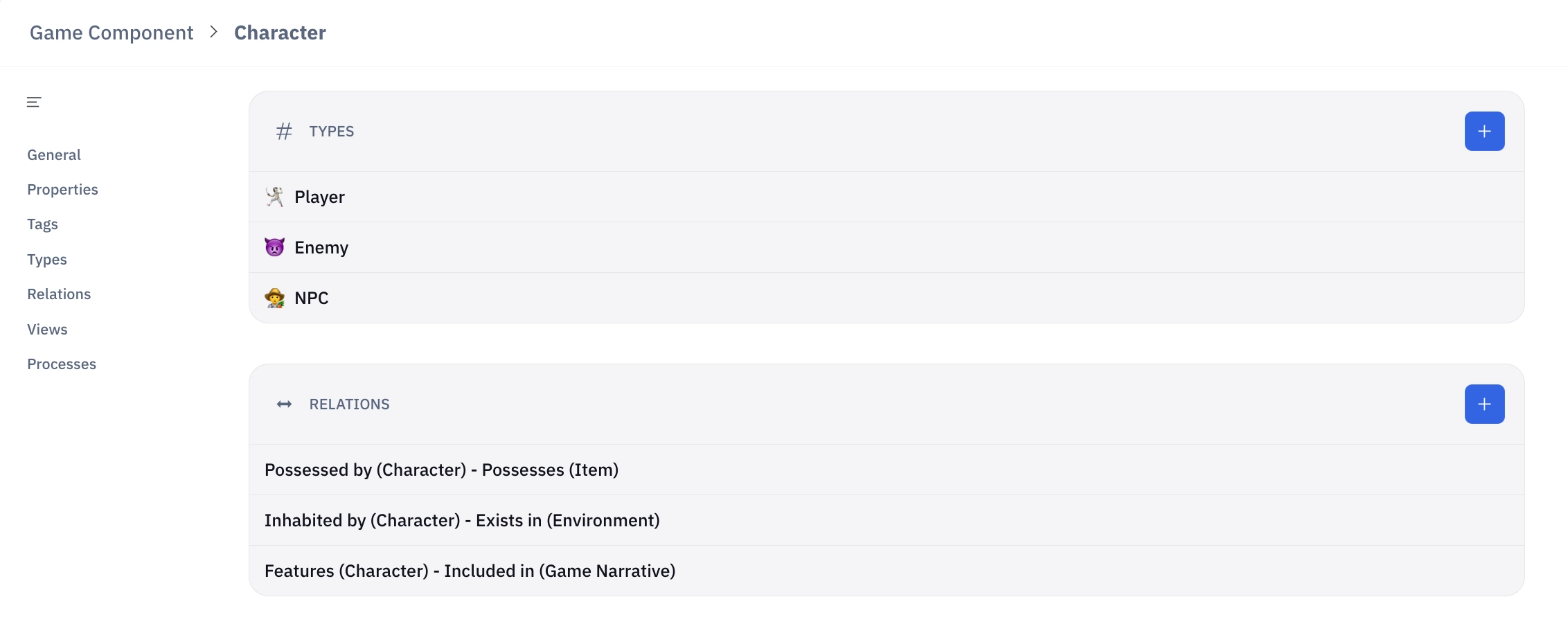Defining Relations
To define Relations between Types, navigate to Settings and open the Type you want to add a Relation to. Click the + button in the Relations area.

Naming Relations
When defining a Relation, you’ll need to give it a clear and descriptive name on both sides. The names should be human-readable and indicate the nature of the relationship between the two entities.
Let’s look at some examples of Relations on our Character Type:
- Possessed by (
Character) - Possesses (Item)-
Meaning: A Character possesses an Item; an Item is possessed by a Character.
-
- Inhabited by (
Character) - Exists in (Environment)-
Meaning: A Character exists in an Environment; an Environment is inhabited by a Character.
-
- Features (
Character) - Included in (Game Narrative)- Meaning: A Character is included in a Game Narrative; a Game Narrative features a Character
These names describe how two Types are connected, allowing the system to establish their relationships clearly and logically.

Selecting the kind of Relation
When creating a Relation, you must specify the kind of relationship between the entities. There are three kinds to choose from:
1:1 Relation
Definition: One entity of the first type is related to exactly one entity of the second type.
Example: An Item has only one Audio Asset, and an Audio Asset is only used by one Item.
Use case: This type of relation is ideal for cases where a single instance of one entity is paired with a single instance of another. For instance, each Item may have a unique Audio Asset associated with it.
1:N Relation
Definition: One entity of the first type is related to multiple entities of the second type.
Example: A Quest can have multiple Objectives, but each Objective belongs to only one Quest.
Use case: This relation type is commonly used when a single entity (like a Quest) can be linked to multiple related entities (like Objectives), but each related entity (an Objective) is only connected to that one instance of the first entity.
N:N Relation
Definition: Multiple entities of the first type are related to multiple entities of the second type.
Example: A Character can have multiple Items, and an Item can be used by multiple Characters.
Use case: This relation type is useful when many instances of one entity (e.g., Character) can be associated with many instances of another entity (e.g., Items). It reflects a more dynamic, interconnected system, like a character inventory or shared assets.
By defining clear and meaningful Relations between your Types, you can create a system where entities are connected in ways that mirror their real-world interactions. This adds depth to your data structure, making it easier to navigate, manage, and scale as your system grows.
Using Relations with Cards
Check out our guide on Relating Cards to learn how to connect Cards using the Relations you’ve defined.